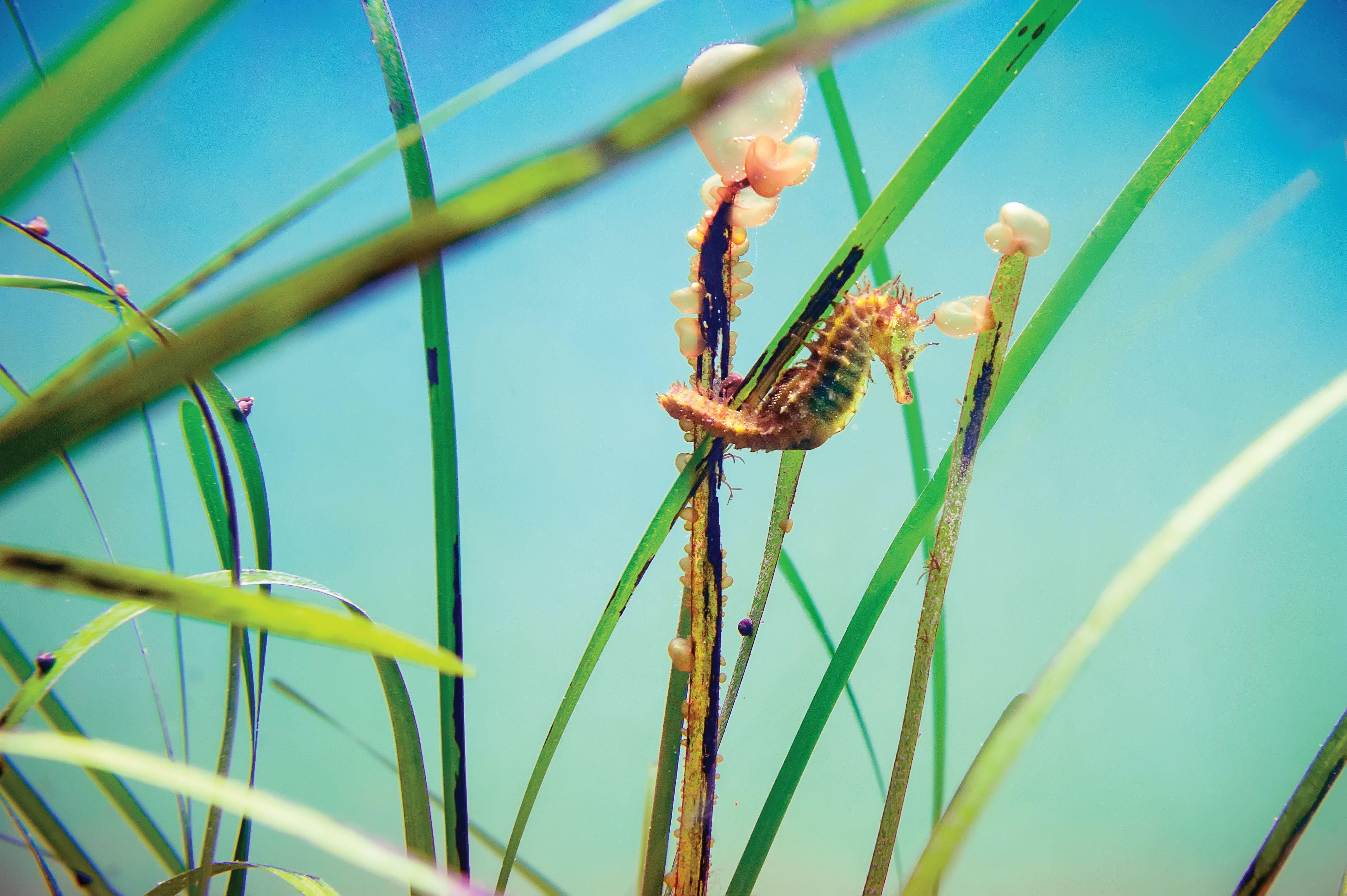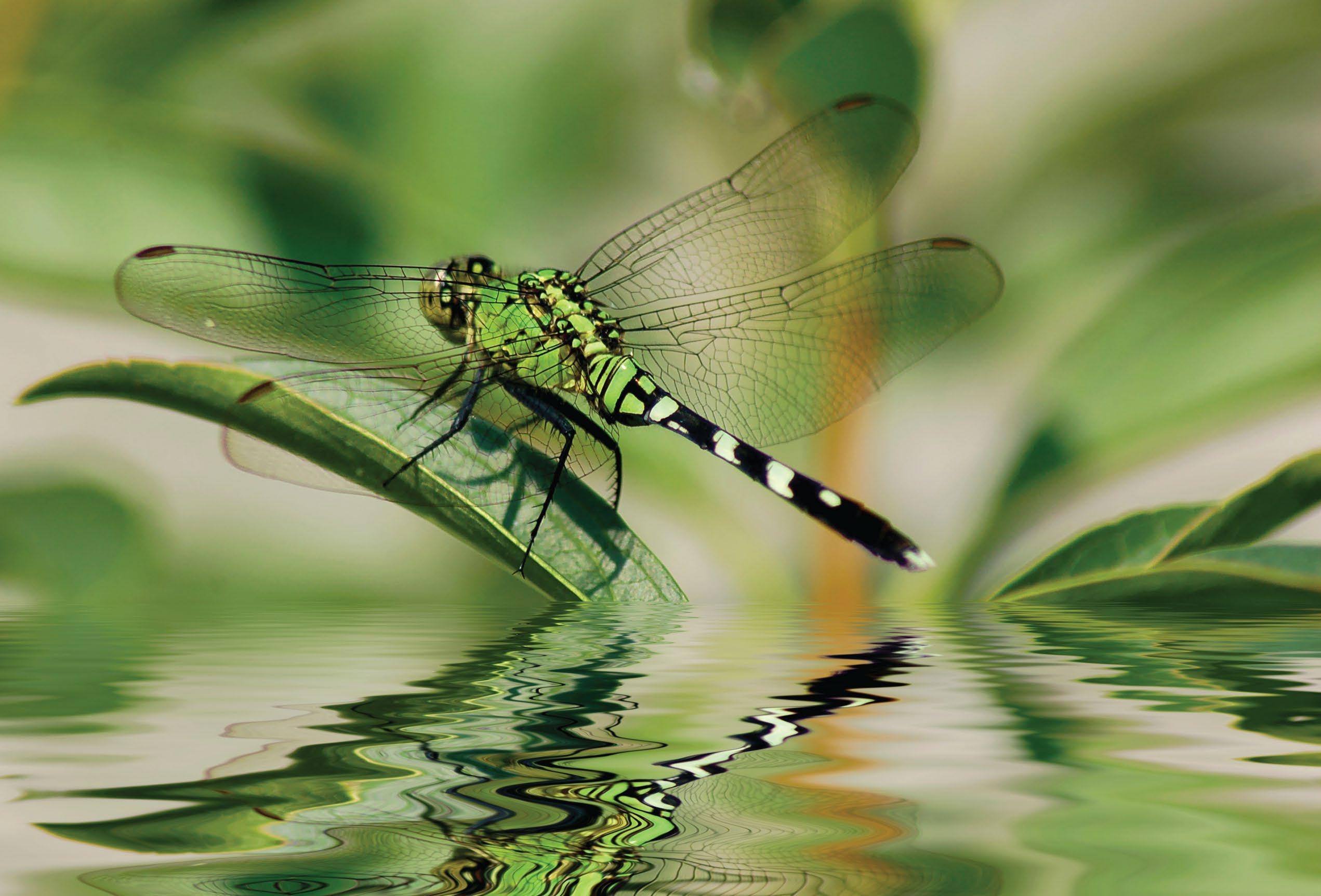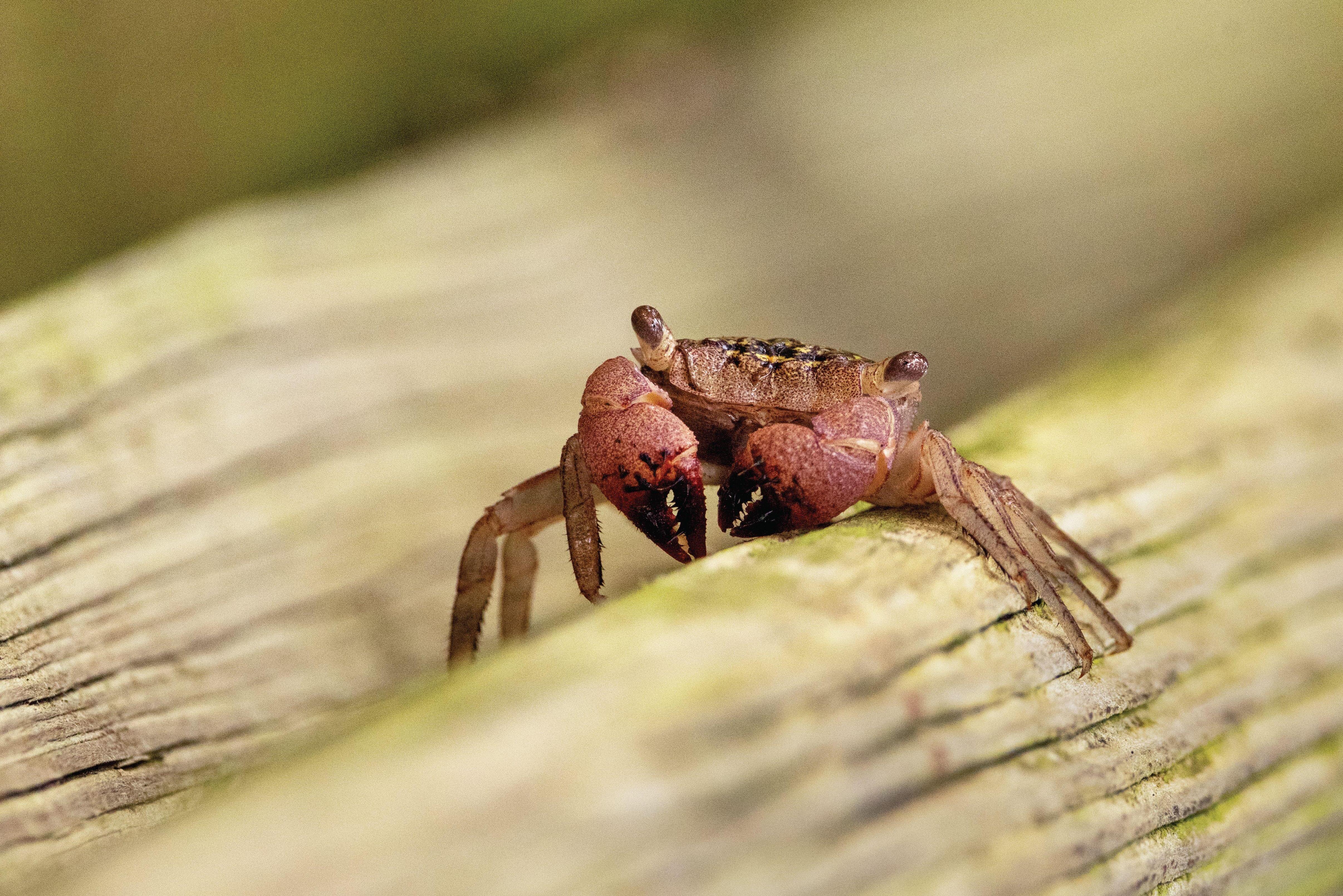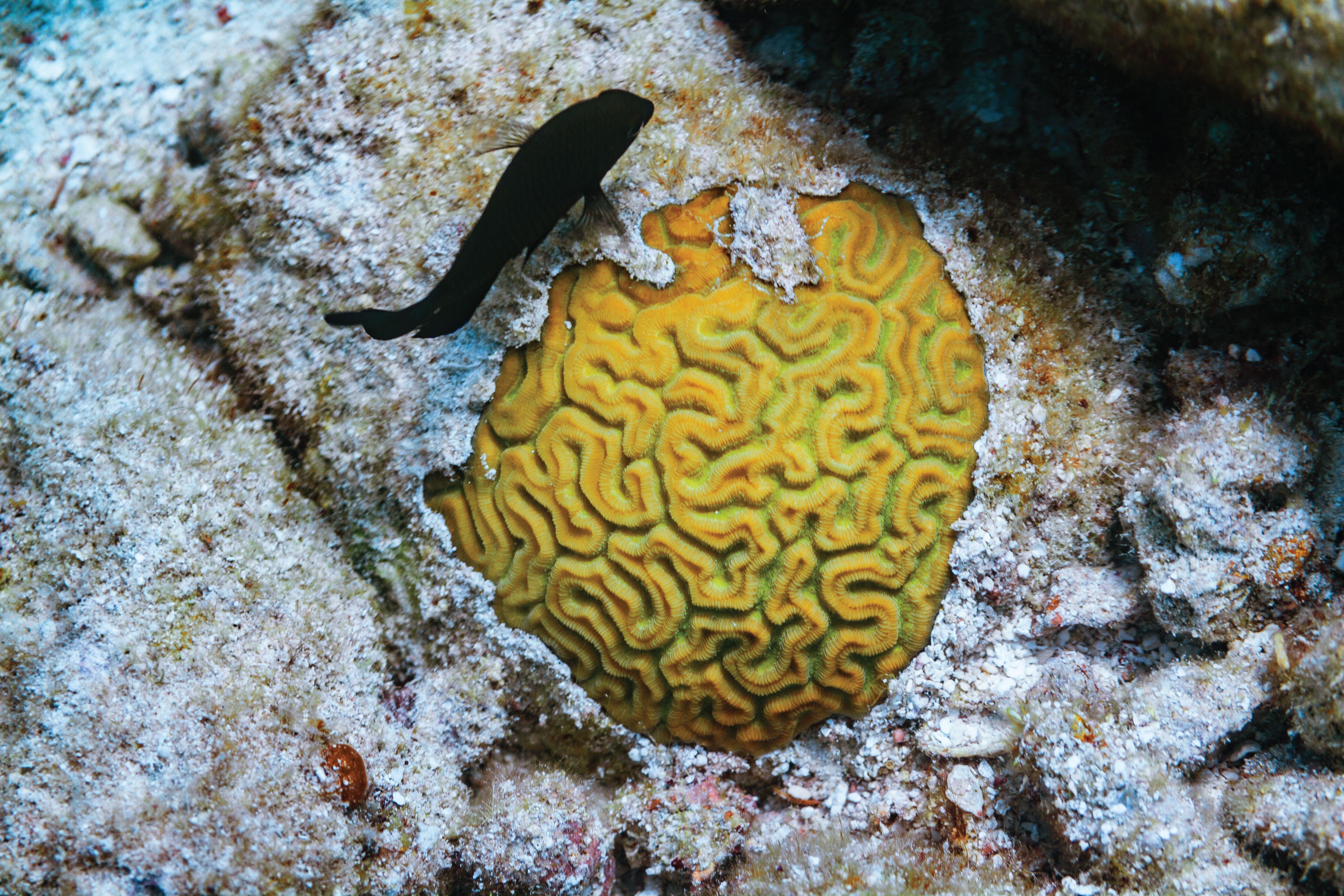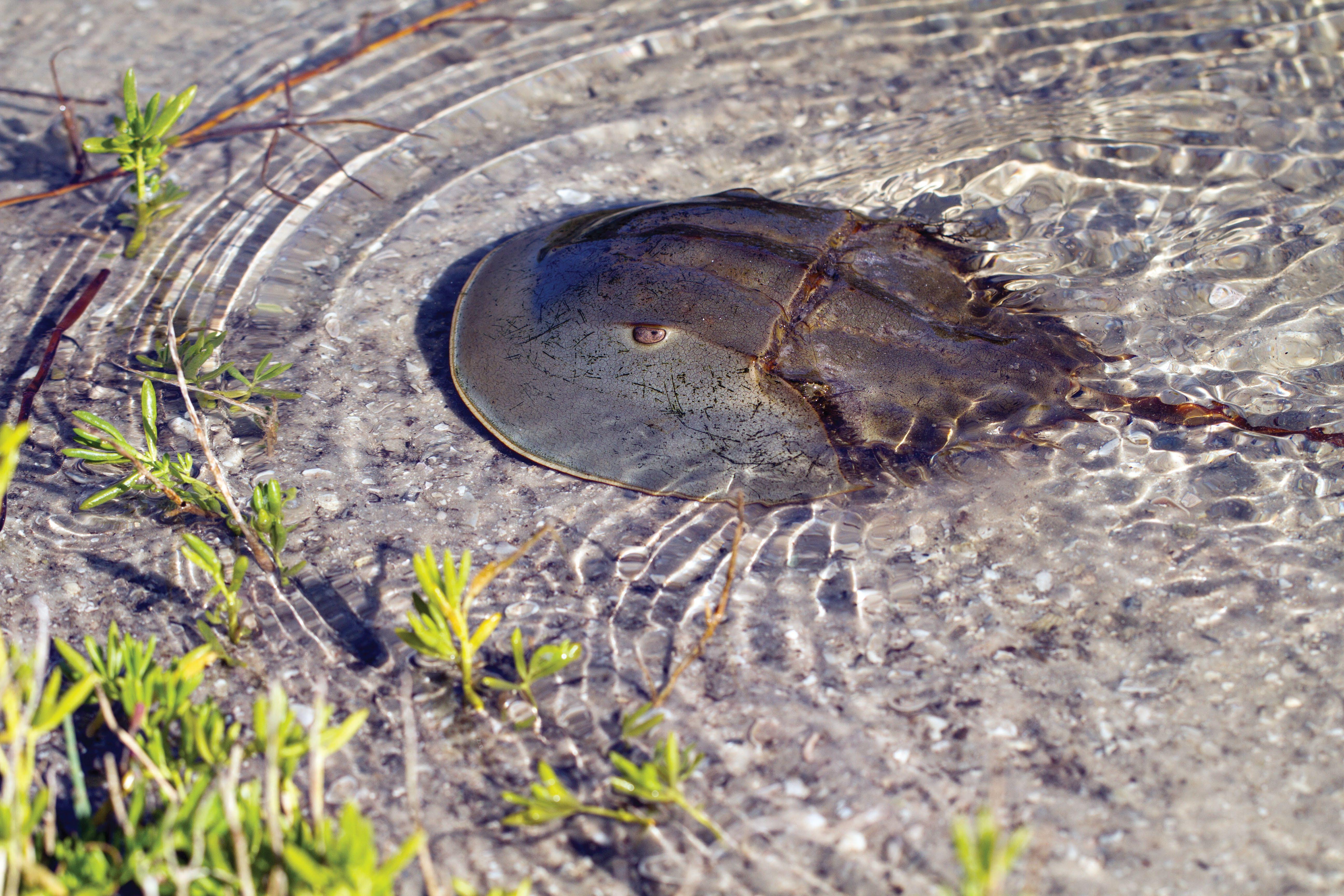GENERAL INFORMATION
• All projects meet certain CPALMS Standards, listed towards the end of this brochure.
• Each school must complete a School Registration form by November 30, 2024. Each class must complete a Class Registration form that includes their class roster by November 30, 2024.
• The Challenge officially starts on October 10th, 2024.
• For each class, 2 entries will be accepted per challenge for judging at their grade level category. For each grade level category, 1 winner will be chosen per challenge from all entries, including the At Home Category.
• To submit an entry for judging, the participant(s) is (are) required to attend at least one environmental activity (lecture, beach cleanup, butterfly walks, birding expedition, invasive plant species removal, etc.). These requirements extend to At Home Individual participants. There is an Environmental Activity Form that can be downloaded and signed at the event by the event coordinator. This form can be handed in with the Project Entry Form.
• A Community Service Award will be given to the school with the greatest percentage of a school’s student population participating in environmental activities for the Key Challenge. For students to get credit for attending an event, they will need to print out an Environmental Activity Form (provided on the registration page) and have the person in charge of the event sign it. These should then be collected by their teacher and turned into KBCF when all the challenges are submitted for judging. If attending a Citizen Science Project event, a signup sheet will be provided, and student attendance automatically recorded for the Key Challenge.
• A completed Project Entry Form must be included with each project submitted for judging. It is available for download on the registration page.
• For group projects, the maximum number of members is four.
• All judging will be anonymous.
• Students must stay within the challenges assigned to their grade level category. Do not combine different projects.
• Absolutely NO perishable items or sand should be used in any of the challenges. Projects should be easily portable and should not have too many loose parts.
• The given size limitations must be adhered to by all participants. Projects that are outside the size limitations will be disqualified.
• For questions, visit www.keychallenge.org, email info@keyscience.org, or call (305) 361-2770.
• Register at www.keychallenge.org
2D OR 3D CREATION*
(INDIVIDUALS, GROUPS, CLASS & AT-HOME | up to 2ft x 3ft)
Create a collage or sculpture depicting a habitat for a particular animal found in Florida's coral reefs, mangroves, or seagrasses. Use materials such as paints, found objects, clay, or other non-perishable items (please no sand and do not create new trash by buying disposable objects). Include a written description by the teacher or parent that accurately describes the habitat and the animal found in it, the process of creating the artwork, the materials collected, and the lessons learned about the characteristics of the habitat and why this animal lives there.
TWO FISH PUPPETS*
(INDIVIDUALS, GROUPS & AT-HOME | 2 fish puppets & 1 page story)
Start by watching the Coral City Camera (www.coralcitycamera.com) and observe. Choose two fish that interact with each other and make puppets that look like them. Pay attention to their colors, shapes, and patterns, and include these details in your puppets. Write a short story about how they interact with each other with a parent or teacher.
CORAL REEF MATCHING GAME*
(INDIVIDUALS, GROUPS & AT-HOME | 10 3” x 3” cards)
Create a card matching game by cutting cardstock or thick paper into uniform rectangles or squares. Each card should be about 3x3 inches. You will need 10 cards to create 5 matching pairs. Choose a variety of coral reef animals and plants to feature on the cards. Examples include sea turtles, starfish, different types of coral, sea anemones, and various reef fish.
VISUAL ART & GEM POETRY*
(INDIVIDUALS & AT-HOME | 1 visual art piece & 1 gem poem )
Create a piece of visual art that captures the theme of environmental conservation, specifically focusing on marine biodiversity. You may use any medium such as painting or drawing. Your artwork should reflect creativity, originality, and a deep understanding of the beauty and importance of protecting natural habitats like coral reefs, mangroves, or seagrasses. Then, write a gem poem inspired by the wonders of coral reefs and their inhabitants and your visual art. A gem poem follows a specific structure: the first line contains 1 word, the second line has 2 words, the third line has 3 words, the fourth line has 4 words, the fifth line has 3 words, the sixth line has 2 words, and the seventh line concludes with 1 word.
BOOK
(GROUPS & CLASS | max 28 pgs including cover)
Create a book (for example ABC, Counting, Colors, a story, or any other idea) depicting or talking about Florida’s coral reefs, mangroves, or seagrasses and/or the animals that live within them. The artwork and/or words must be student-generated, but the book may be computer-printed or assembled by the teacher for very young students. Include a description of the creation of the book and the students’ involvement (written by the teacher or parent). Please try to include as many different animals or habitat elements as possible (with the understanding that it may not be possible to include something different for every part of the book).
2D OR 3D CREATION*
(INDIVIDUALS, GROUPS, CLASS & AT-HOME | up to 2ft x 3ft)
Create a collage, painting, or sculpture depicting a habitat for a particular native animal found in Florida's coral reefs, mangroves, or seagrasses. Use materials such as paints, found objects, clay, or other non-perishable items (please no sand). Include a written description (by the teacher) that describes the animal found in this habitat, the process of creating the artwork, the materials collected, and the lessons learned about the characteristics of the habitat and why this animal lives there.
SCIENCE PROJECT
(INDIVIDUALS & GROUPS | a detailed exploration)
Create a detailed exploration of coral reefs, mangroves, or seagrasses biodiversity by cataloging the diverse plants and animals found within this ecosystem and illustrating their interrelationships. Describe the unique habitats and animal species present. Present your findings on a poster or foam board, incorporating images and data to visually represent the rich biodiversity and intricate ecological interactions within coral reefs’, mangroves’, or seagrasses’ ecosystems.
VISUAL ART & GEM POETRY*
(INDIVIDUALS & AT-HOME | 1 visual art piece & 1 gem poem )
Create a piece of visual art that captures the theme of environmental conservation, specifically focusing on marine biodiversity. You may use any medium such as painting or drawing. Your artwork should reflect creativity, originality, and a deep understanding of the beauty and importance of protecting natural habitats like coral reefs, mangroves, or seagrasses. Then, write a gem poem inspired by the wonders of coral reefs and their inhabitants and your visual art. A gem poem follows a specific structure: the first line contains 1 word, the second line has 2 words, the third line has 3 words, the fourth line has 4 words, the fifth line has 3 words, the sixth line has 2 words, and the seventh line concludes with 1 word.
CORAL REEF DIORAMA*
(INDIVIDUALS, GROUPS, CLASS & AT-HOME | shoebox diorama & small written description)
Create a diorama depicting coral reefs, mangroves, or seagrasses and its native animals. Use a shoebox or similar container and materials such as paper, clay, and other craft supplies to construct the reef and its inhabitants. Include a written description (by the teacher) explaining the different animals and plants in the diorama, how they are adapted to the coral reef habitat, and the process of creating the diorama.
SPECIES DEPICTION*
(INDIVIDUALS, GROUPS, & AT-HOME | each poster up to 12in x 18in)
Choose three animals (one from coral reefs, one from mangroves, and one from seagrasses) and create individual posters for each species. Each poster should prominently display the animal's name along with a photograph or detailed illustration depicting its unique characteristics. Describe the specific habitats where each animal resides, emphasizing their importance within the ecosystem. Highlight the significance of conserving these animals for maintaining biodiversity and ecosystem health.
VISUAL ART & GEM POETRY*
(INDIVIDUALS & AT-HOME | 1 visual art piece & 1 gem poem )
Create a piece of visual art that captures the theme of environmental conservation, specifically focusing on marine biodiversity. You may use any medium such as painting or drawing. Your artwork should reflect creativity, originality, and a deep understanding of the beauty and importance of protecting natural habitats like coral reefs, mangroves, or seagrasses. Then, write a gem poem inspired by the wonders of coral reefs and their inhabitants and your visual art. A gem poem follows a specific structure: the first line contains 1 word, the second line has 2 words, the third line has 3 words, the fourth line has 4 words, the fifth line has 3 words, the sixth line has 2 words, and the seventh line concludes with 1 word.
2D OR 3D MIXED MEDIA MAP*
(INDIVIDUALS, GROUPS & AT-HOME | up to 12” x 18”)
Create a mixed media map of Key Biscayne that showcases native animals living in or around the Key, focusing on coral reefs, mangroves, or seagrass biodiversity. Use various materials such as paint, dry media, and found objects to depict the animals and their habitats (use only non-perishable items and please no sand). The map should creatively illustrate where each species would be found geographically and how they interact within their specific habitats. Provide a written description explaining how these animals are uniquely adapted to their environments, highlighting their roles in the coral reefs, mangroves, or seagrass ecosystem. This project aims to educate about the diversity and importance of marine life in Key Biscayne while promoting creativity and environmental awareness through art.
SPECIES CLASSIFICATION*
(INDIVIDUALS, GROUPS, CLASS & AT-HOME | up to 10” x 12” with written decription of each animal
Choose 5 plants or animals that are native or invasive, and that are found in nearshore environments, and create individual posters for each one. Each poster should contain a common name and scientific name, a picture, and a description of its adaptations to the local habitat. Inclusion of threats and protections is encouraged. (Special prize for winners!)
CORAL REEF DIORAMA*
(INDIVIDUALS, GROUPS, CLASS & AT-HOME | shoebox diorama & small written description)
Create a diorama depicting coral reefs, mangroves, or seagrasses and its native animals. Use a shoebox or similar container and materials such as paper, clay, and other craft supplies to construct the reef and its inhabitants. Include a written description explaining the different animals and plants in the diorama, how they are adapted to the coral reef habitat, and the process of creating the diorama.
SCIENCE PROJECT
(INDIVIDUALS & GROUPS | a detailed exploration)
Create a detailed exploration of coral reefs, mangroves, or seagrasses biodiversity by cataloging the diverse plants and animals found within this ecosystem and illustrating their interrelationships. Describe the unique habitats that support these species and provide in-depth profiles of selected animal species present in the coral reef. Present your findings on a poster or foam board, incorporating images and data to visually represent the rich biodiversity and intricate ecological interactions within coral reefs’, mangroves’, or seagrasses’ ecosystems.
CORAL REEF DIORAMA*
(INDIVIDUALS, GROUPS, CLASS & AT-HOME | shoebox diorama & small written description)
Create a diorama depicting coral reefs, mangroves, or seagrasses and its native animals. Use a shoebox or similar container and materials such as paper, clay, and other craft supplies to construct the reef and its inhabitants. Include a written description explaining the different animals and plants in the diorama, how they are adapted to the coral reef habitat, and the process of creating the diorama.
ENVIRONMENTAL FABLE*
(INDIVIDUALS, GROUPS & AT-HOME | max 3 pages, not including cover)
Create a short story featuring the theme of coral reef biodiversity. There should be one or two drawn or digitally created pictures to go along with the story as cover art. The story should be about a challenge faced by the main character (one of the animals that lives in the habitat) and have a moral at the end of the story for the audience. Stories should not be longer than 3 pages typed. This project aims to educate younger audiences about the importance of coral reefs and the diverse marine life they support, allowing older students to share their knowledge with younger peers through engaging story-telling and colorful illustrations. (Winners may get a chance to read their stories to younger students!)
NATIVE ANIMAL PSA VIDEO
(INDIVIDUALS, GROUPS & AT-HOME | video up to 7 minutes)
Create a public service announcement focused on safeguarding native animals found in or around Key Biscayne, specifically addressing their importance within Florida's coral reefs, mangroves, or seagrass ecosystems. Explain how human activities, such as pollution, overfishing, climate change, and habitat destruction, threaten these animals and their habitats. Discuss the lasting impacts of these environmental issues on Key Biscayne's biodiversity. Provide actionable steps individuals can take to contribute to conservation efforts and protect native species. Ensure that all video production adheres to legal and ethical guidelines, avoiding any disruption to wildlife.
VISUAL ART & GEM POETRY*
(INDIVIDUALS & AT-HOME | 1 visual art piece & 1 gem poem )
Create a piece of visual art that captures the theme of environmental conservation, specifically focusing on marine biodiversity. You may use any medium such as painting or drawing. Your artwork should reflect creativity, originality, and a deep understanding of the beauty and importance of protecting natural habitats like coral reefs, mangroves, or seagrasses. Then, write a gem poem inspired by the wonders of coral reefs and their inhabitants and your visual art. A gem poem follows a specific structure: the first line contains 1 word, the second line has 2 words, the third line has 3 words, the fourth line has 4 words, the fifth line has 3 words, the sixth line has 2 words, and the seventh line concludes with 1 word.
CORAL BLEACHING AWARENESS CAMPAIGN*
(INDIVIDUALS, GROUPS, AT-HOME | 3 campaign posts & 2-3 paragraphs)
Create an educational campaign to raise awareness about coral bleaching. Write a couple paragraphs on how you would do this and what platforms would be used (posters, videos, and social media, etc.). Create 3 of the campaign posts you discussed in your paragraphs. They should all explain the causes and consequences of coral bleaching, emphasizing its impact on coral reef ecosystems and biodiversity. Provide information on how individuals can contribute to conservation efforts to mitigate coral bleaching. Use compelling visuals and clear, concise messaging to engage your audience and encourage action towards protecting coral reefs.
SCIENCE REPORT*
(INDIVIDUALS, GROUPS & AT-HOME | max 4 page written report (you may include pictures on a separate page, along with the written report.)
Florida's coral reefs, an animal native to there, and its habitat. This should include data collection and analysis; the level of detail will be left up to the participants, but more detailed information will score higher.
COLORING BOOK, COMIC STRIP, OR ILLUSTRATED STORY*
(INDIVIDUALS, GROUPS, AT-HOME | max 20 pgs including cover & comic strips should not exceed 16 panels)
Create a coloring book or a comic strip that tells a narrative with the theme of coral reef, mangrove, or seagrass biodiversity. Describe the different ways in which its animals interact with each other. Keep in mind that this project is being made for a younger audience, to give older students a chance to teach younger students about the environment. (Winners may get a chance to read their stories to younger students!)
CORAL REEF DIORAMA & GEM POETRY*
(INDIVIDUALS & AT-HOME | one shoebox diorama & one gem poem)
Create a diorama depicting a coral reef and its native animals. Use a shoebox or similar container and materials such as paper, clay, and other craft supplies to construct the reef and its inhabitants. Include a written description explaining the different animals and plants in the diorama, how they are adapted to the coral reef habitat, and the process of creating the diorama. Additionally, write a gem poem inspired by the wonders of coral reefs and their inhabitants. A gem poem follows a specific structure: the first line contains 1 word, the second line has 2 words, the third line has 3 words, the fourth line has 4 words, the fifth line has 3 words, the sixth line has 2 words, and the seventh line concludes with 1 word. Your gem poem should evoke imagery and emotions related to the vibrant life and delicate balance found within coral reef ecosystems.
CORAL BLEACHING AWARENESS CAMPAIGN*
(INDIVIDUALS, GROUPS, AT-HOME | 3 campaign posts & 2-3 paragraphs)
Create an educational campaign to raise awareness about coral bleaching. Write a couple paragraphs on how you would do this and what platforms would be used (posters, videos, and social media, etc.). Create 3 of the campaign posts you discussed in your paragraphs. They should all explain the causes and consequences of coral bleaching, emphasizing its impact on coral reef ecosystems and biodiversity. Provide information on how individuals can contribute to conservation efforts to mitigate coral bleaching. Use compelling visuals and clear, concise messaging to engage your audience and encourage action towards protecting coral reefs.
NATIVE ANIMAL PSA VIDEO
(INDIVIDUALS, GROUPS & AT-HOME | video up to 5 minutes)
Create a public service announcement focused on safeguarding native animals found in or around Key Biscayne, specifically addressing their importance within Florida's coral reef ecosystems. Explain how human activities, such as pollution, overfishing, climate change, and habitat destruction, threaten these animals and their habitats. Discuss the lasting impacts of these environmental issues on Key Biscayne's biodiversity. Provide actionable steps individuals can take to contribute to conservation efforts and protect native species. Ensure that all video production adheres to legal and ethical guidelines, avoiding any disruption to wildlife.
SCIENCE REPORT*
(INDIVIDUALS & AT-HOME | 6-7 pages)
Write a report detailing the biodiversity of the coral reefs, mangroves, and seagrasses found in Florida's near-shore environments. The report should emphasize the importance of protecting these habitats and the animals found within them, detailing how human activities impact their survival. The report can be broad (for example, a general report on a single animal, a description of where it lives, and human influence), or more detailed (for example, focusing on several animals found in a habitat and their roles within the ecosystem, their food sources and characteristics, how they affect each other, and how they are influenced or affected by the actions of humans, etc.). It can include any aspect of coral reefs, mangroves, and seagrasses, and their biodiversity. The subject of the paper does not have to be specific to Key Biscayne, although it is preferred. The subject and detail-level of the report will be left to the participant to decide; however, all reports should show research, data collection, and analysis. It should loosely follow the scientific method: 1) ask a question, 2) do background research, 3) construct a hypothesis, 4) collect data and/or test hypothesis, 5) review accuracy of hypothesis, and 6) draw a conclusion. It is okay if your data proves your hypothesis to be incorrect! Students can either create their own experiment based on their hypothesis and collect data that they will include in their report, or they can write a research paper using data sources and information from other scientific literature to prove or disprove their hypothesis. All outside sources must be cited. This project is includes a competitive award as it is more involved and detailed. It has a monetary award of $200 for 1st place, $150 for 2nd place, and $100 for 3rd place.

All H2 students may opt to do one of the H1 challenges, which will be judged in the same category as H1. However, only the H2 Science Report has the competitive monetary prizes.
AT-HOME
(CHOOSE ONE PROJECT PER STUDENT)
Individuals who live on Key Biscayne but do not attend school on the Key or who attend school on the Key but whose class is not participating may still participate individually in the Key Challenge, following these guidelines:
• Each child registrant may enter with one of the challenges given for their grade level category. The challenges listed on previous pages which will be allowed for the At Home Individual entries are marked with an asterisk (*).
• The child registrant’s parent/guardian may register him or her online in the At Home Individual category, or the child may register him or herself if high school aged.
• The child registrant will need to have their current teacher fill out and sign a form verifying their current grade level, which will be available for download on the online registration page.
• Each At Home Individual challenge entry will be judged against other entries of the same grade level category.
• Parents may provide guidance, but should allow the child to do the challenge on their own as much as possible.
• Register at www.keychallenge.org.
PRE-K, KINDERGARTEN, & FIRST GRADES
2-D or 3-D Creation
Big Idea 14
SC.K.L.14 - Organization and Development of Living Organisms
Big Idea VA.K.O. - Organization Structure - Enduring Understanding VA.K.O.1
Two Fish Puppets
Big Idea 14
SC.K.L.14. - Organization and Development of Living Organisms
Enduring Understanding 1 VA.K.O.1 - Understanding the organizational structure of an art form provides a foundation for appreciation of artistic works and respect for the creative process.
Book
Big Idea 14
SC.K.L.14 - Organization and Development of Living Organisms
Big Idea 17 - SC.1.L.17 - Interdependence
Standard 1 ELA.1.C.1 - Communicating through Writing
Visual Art and Gem Poetry
Big Idea VA.1.C - Critical Thinking and Reflection
Enduring Understanding 1 VA.K.S.1 - The arts are inherently experiential and actively engage learners in the processes of creating, interpreting, and responding to art.
Coral Reef Matching Game
Big Idea 14
SC.K.L.14 - Organization and Development of Living Organisms
2ND & 3RD GRADES
2-D or 3-D Creation
Big Idea 14, SC.3.L.14 - Organization and Development of Living Organisms
Big Idea VA.2.C - Critical Thinking and Reflection
Big Idea VA.2.S - Skills, Techniques, and Processes
Species Depiction
Big Idea 17, SC.2.L.17 - Interdependence
Big Idea 14
SC.3.L.14 - Organization and Development of Living Organisms
2ND & 3RD GRADES
Coral Reef Diorama
Big Idea 17, SC.2.L.17 - Interdependence
Enduring Understanding 1 VA.2.S.1 - The arts are inherently experiential and actively engage learners in the processes of creating, interpreting, and responding to art
Visual Art and Gem Poetry
Enduring Understanding 1 VA.2.C.1 - Cognition and reflection are required to appreciate, interpret, and create with artistic intent.
Standard 1 ELA.3.C.1 - Communicating Through Writing
Science Project
Big Idea 17
SC.2.L.17 - Interdependence
Big Idea 14
SC.3.L.14 - Organization and Development of Living Organisms
4TH & 5TH GRADES
2-D or 3-D Mixed Media Map
Big Idea 17
SC.4.L.17 - Interdependence
Enduring Understanding 3 VA.4.O.3 - Every art form uses its own unique language, verbal and non-verbal, to document and communicate with the world.
Coral Reef Diorama
Big Idea 17
SC.4.L.17 - Interdependence
Enduring Understanding 2 VA.4.O.2 - The structural rules and conventions of an art form serve as both a foundation and departure point for creativity.
Species Classification
Big Idea 14
Big Idea 15
SC.5.L.14 - Organization and Development of Living Organisms
SC.5.L.15: Diversity and Evolution of Living Organisms
4TH & 5TH GRADES CONTINUED
Visual Art and Gem Poetry
Enduring Understanding 1 VA.5.C.1 - Cognition and reflection are required to appreciate, interpret, and create with artistic intent.
Standard 1
ELA.6.C.1 - Communicating Through Writing
Science Project
Big Idea 14
Big Idea 15
SC.5.L.14 - Organization and Development of Living Organisms
SC.5.L.15 - Diversity and Evolution of Living Organisms
MIDDLE SCHOOL: 6TH, 7TH & 8TH GRADES
Coral Reef Diorama
Big Idea 14
SC.5.L.14 - Organization and Development of Living Organisms
Enduring Understanding 2 VA.68.S.2 - Development of skills, techniques, and processes in the arts strengthens our ability to remember, focus on, process, and sequence information.
Environmental Fabel
Big Idea 14
SC.6.L.14 - Organization and Development of Living Organisms
Enduring Understanding 2 VA.68.S.2 - Development of skills, techniques, and processes in the arts strengthens our ability to remember, focus on, process, and sequence information.
Visual Art and Gem Poetry
Enduring Understanding 1 VA.68.C.1 - Cognition and reflection are required to appreciate, interpret, and create with artistic intent
Standard 1
ELA.6.C.1 - Communicating Through Writing
Native Animal PSA Video
Big Idea 14
SC.6.L.14 - Organization and Development of Living Organisms
Enduring Understanding 2 VA.68.F.2 - Careers in and related to the arts significantly and positively impact local and global economies.
Coral Bleaching Awareness Campaign
Big Idea 17
SC.7.L.17 - Interdependence
Big Idea 18
SC.8.L.18 - Matter and Energy Transformations
HIGH SCHOOL 1: 9TH & 10TH GRADES
Coral Reef Diorama and Gem Poetry
Standard 3
SC.912.N.3 - The Role of Theories, Laws, Hypotheses, and Models
Standard 4
SC.912.N.4 - Science and Society
Coloring Book, Comic strip, or Illustrated Story
Standard 4
SC.912.N.4 - Science and Society
Standard 14
SC.912.L.14 - Organization and Development of Living Organisms
Native Animal PSA Video
Standard 7
SC.912.E.7 - Earth Systems and Patterns
Standard 4
SC.912.N.4 - Science and Society
Science Report
Standard 7
Standard 1
SC.912.E.7 - Earth Systems and Patterns
SC.912.N.1 - The Practice of Science
Coral Bleaching Awareness Campaign
Standard 3
SC.912.N.3 - The Role of Theories, Laws, Hypotheses, and Models
Standard 4
SC.912.N.4 - Science and Society
HIGH SCHOOL 2: 11TH & 12TH GRADES
Science Report
Standard 7
SC.912.E.7 - Earth Systems and Patterns
Standard 4
SC.912.N.4 - Science and Society
Citizen Scientist Project’s KEY CHALLENGE


